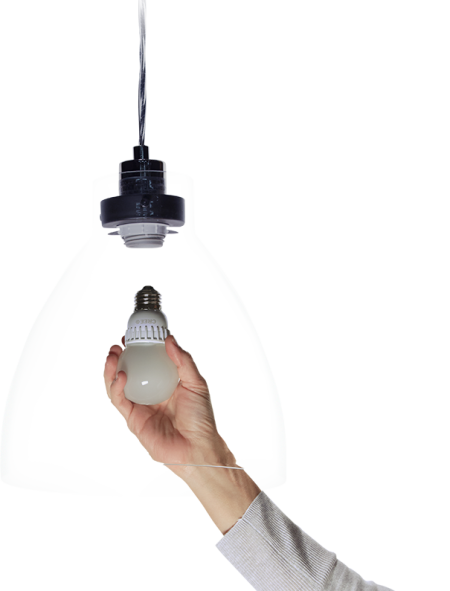Recently, I had a chance to speak with Mike Watson, Vice President of Product Strategy for Cree, about the state of LED lighting, and what consumers need to know when choosing the best LED lamp for their tasks. He enlightened me as to the sad state of lighting knowledge that most consumers were in — through no fault of their own. Manufacturers may be to blame for this state of confusion because they provide confusing or incorrect information about their lighting products. With the January 1, 2014 incandescent phase-out, when 60- and 40-W incandescent light bulbs are no longer produced, consumers now have even fewer familiar options from which to choose. Here are some of the top tricks manufacturers use that can mislead consumers:

1. All-around light vs. incomplete light
Traditional incandescent bulbs provide full, smooth, all-around light in all directions (omnidirectional light) to provide wide-area general illumination or to fully fill a lampshade designed for an all-around light source. Consumers need to watch out for bulbs that don’t provide the same all-around light that claim to be fully omnidirectional, but have odd mushroom tops or flattened shapes that likely emit light that leaves some portions of a room or lampshade dark.
2. Halogen incandescents
Halogen technology has been around for a long time, but is now marketed as a new, improved-efficiency incandescent. If it was a better choice for consumers, why weren’t they widely available until the incandescent phase-out? It’s not a coincidence that the Energy Independence and Security Act of 2007 mandates efficiency improvements for traditional bulbs that are the same as the efficiency improvements of halogen technology. Consumers should know that these bulbs may be marketed as incandescent and/or halogen — and while they’re slightly more efficient than a traditional incandescent bulb, they are also more expensive in most cases, run hotter, and don’t have to pass the same standards as LED technology. And while they may be more efficient, LED bulbs like Cree’s are still 78% more efficient than a halogen bulb.
3. Dimmable, but not really
Consumers need to be aware that both the ability to dim and the performance of dimming are important factors when choosing a bulb. CFLs typically don’t dim at all, and if they do, they don’t dim well. Consumers should look for a manufacturer’s dimmer compatibility list and look for bulbs that dim (and dim well!) with most standard dimmers. Cree's dimming compatibility PDF can be downloaded here: http://www.cree.com/consumer/dimmers
4. What's in a warranty?
While some manufacturers offer warranties, most are relatively short. With LED technology, most manufacturers will list a lifetime of 25,000 hours (or 22.8 years at 3 hours/day), but most warranties only last for 3 to 5 years. Cree delivers a 10-year warranty on its LED consumer bulbs to provide confidence to consumers that the bulb they buy will last. Consumers should consider products with longer warranties because this essentially guarantees the selection of a bulb with the longest lifespan.

5. Evolving Energy Star standards
Consumers should be aware that there are two different classifications of Energy Star qualification for LED bulbs — standard and nonstandard. Nonstandard LED bulbs do not meet all the performance requirements of standard bulbs, specifically the directionality of light (all-around omnidirectional). Consumers should look for LED bulbs that meet the standard Energy Star qualification. Consumers should also be aware that some manufacturers will mark their bulbs as “decorative,” which is not the same as standard, and must meet different requirements as those qualified under the Energy Star standard lamp category.
Advertisement
Learn more about Cree





